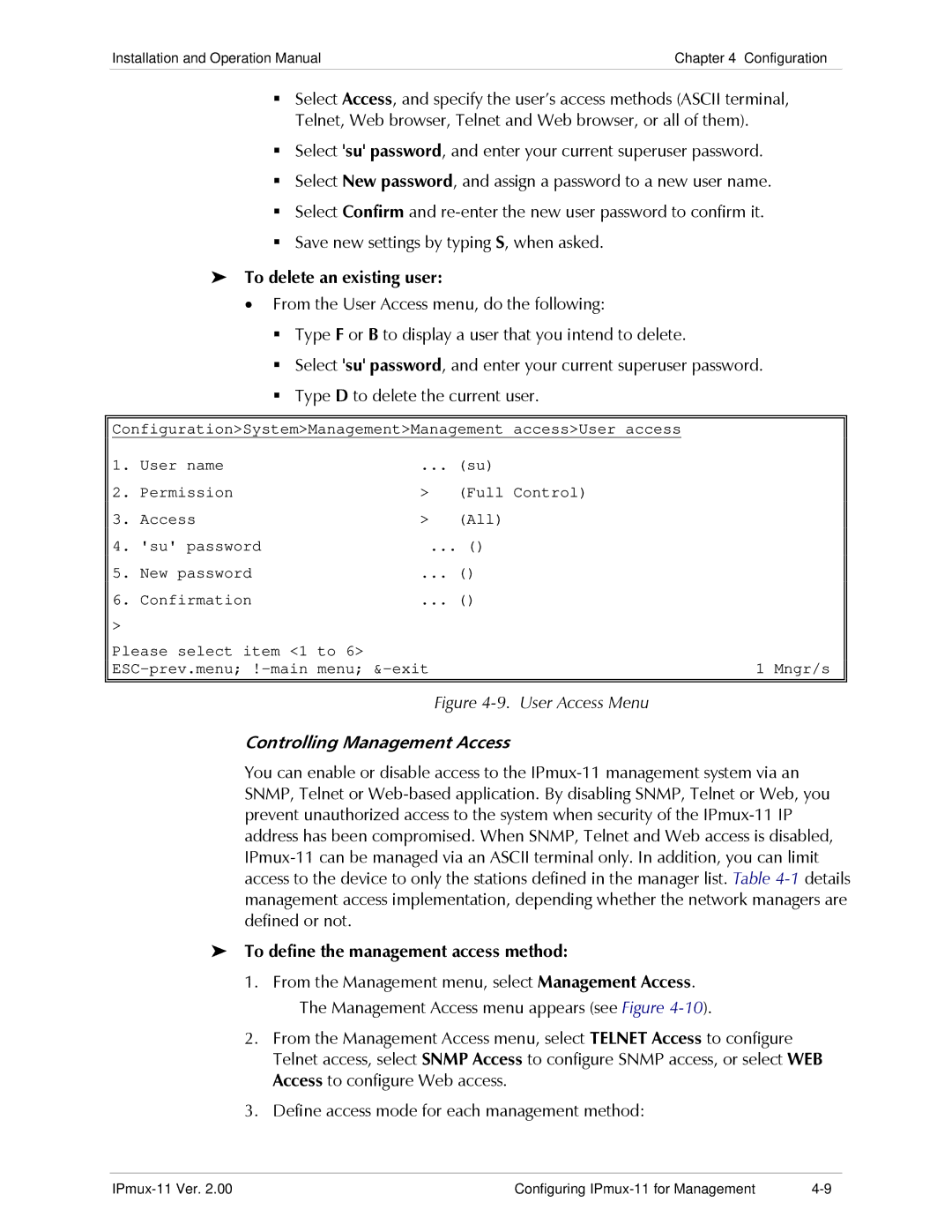
Installation and Operation Manual | Chapter 4 Configuration |
|
|
Select Access, and specify the user’s access methods (ASCII terminal,
Telnet, Web browser, Telnet and Web browser, or all of them).
Select 'su' password, and enter your current superuser password.
Select New password, and assign a password to a new user name.
Select Confirm and
Save new settings by typing S, when asked.
To delete an existing user:
•From the User Access menu, do the following:
Type F or B to display a user that you intend to delete.
Select 'su' password, and enter your current superuser password.
Type D to delete the current user.
Configuration>System>Management>Management access>User access
1. | User name | ... | (su) |
2. | Permission | > | (Full Control) |
3. | Access | > | (All) |
4. | 'su' password | ... () | |
5. | New password | ... () | |
6. | Confirmation | ... () | |
> |
|
| |
| Please select item <1 to 6> | 1 Mngr/s | |
| |||
|
|
|
|
|
| Figure | |
Controlling Management Access
You can enable or disable access to the
To define the management access method:
1.From the Management menu, select Management Access. The Management Access menu appears (see Figure
2.From the Management Access menu, select TELNET Access to configure Telnet access, select SNMP Access to configure SNMP access, or select WEB Access to configure Web access.
3.Define access mode for each management method:
Configuring |
